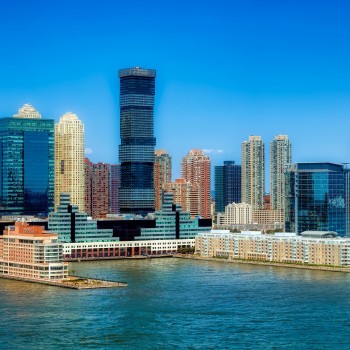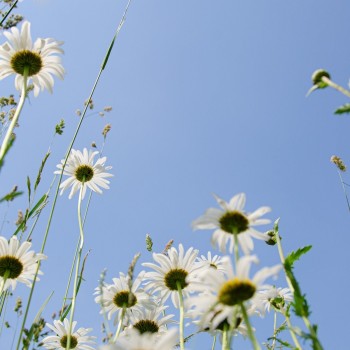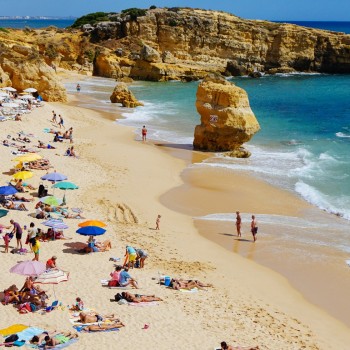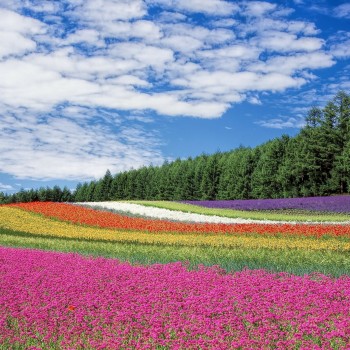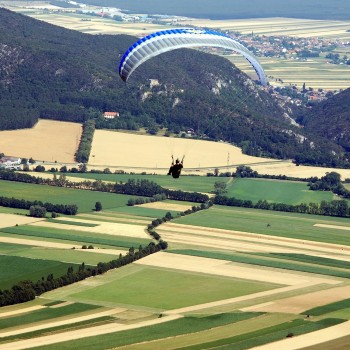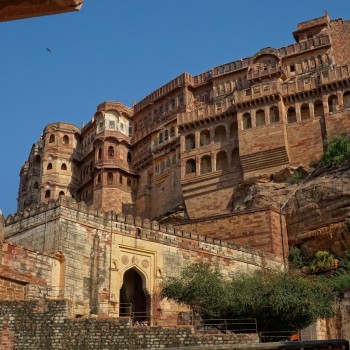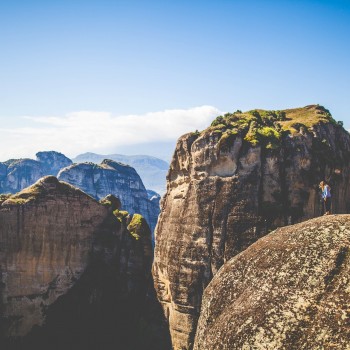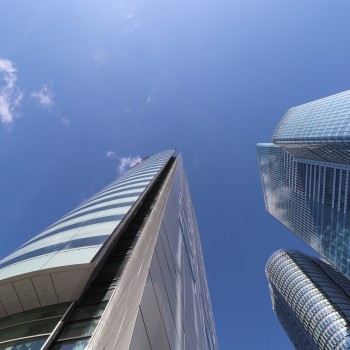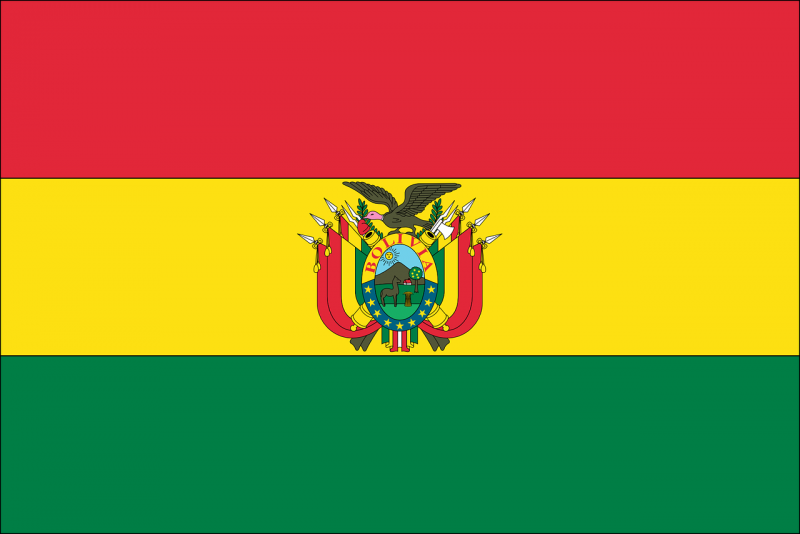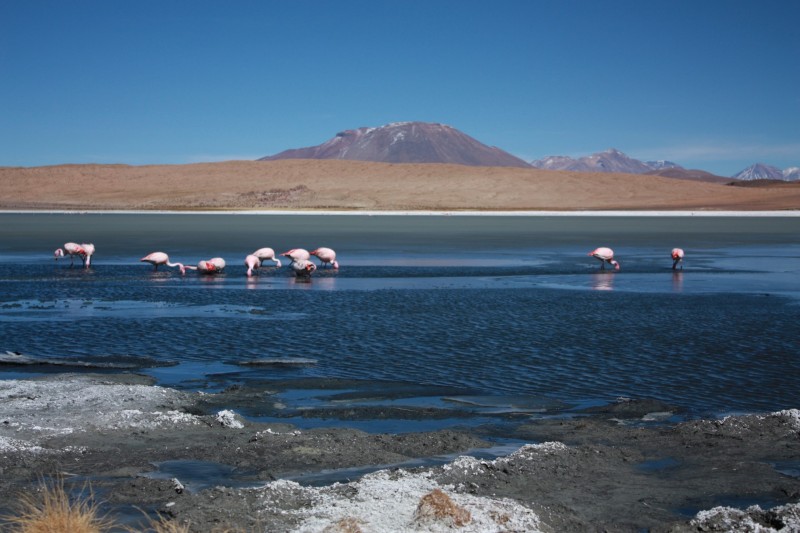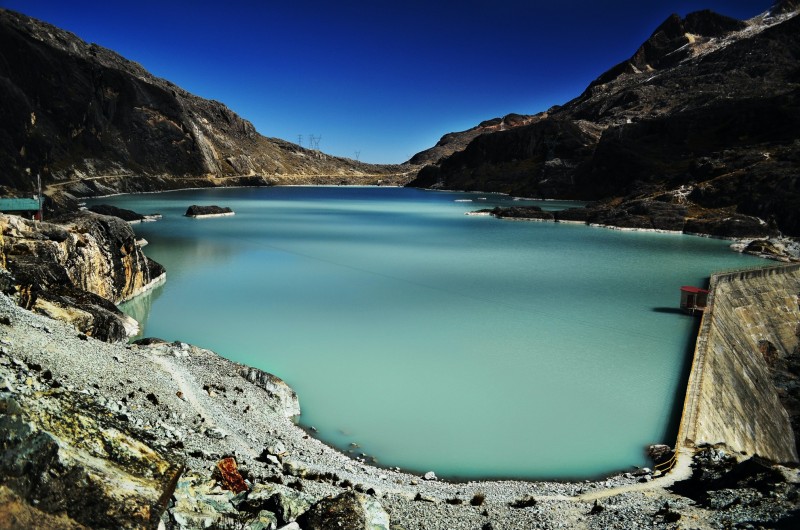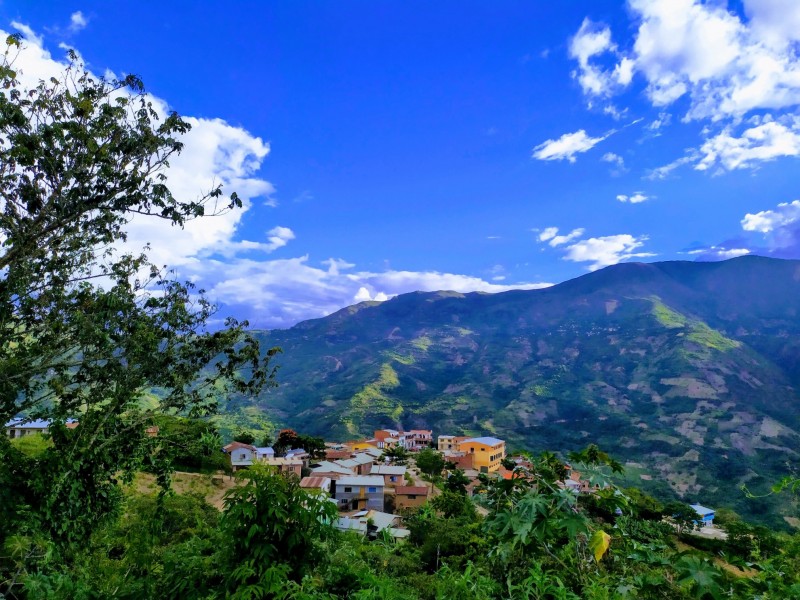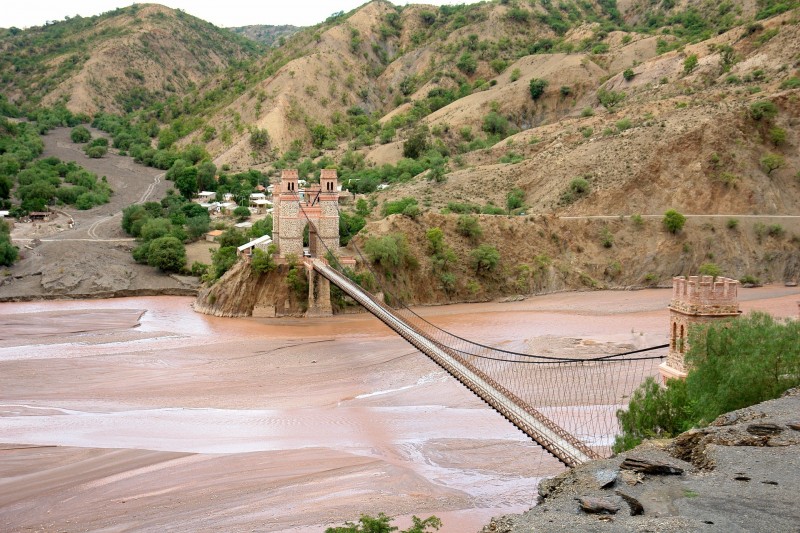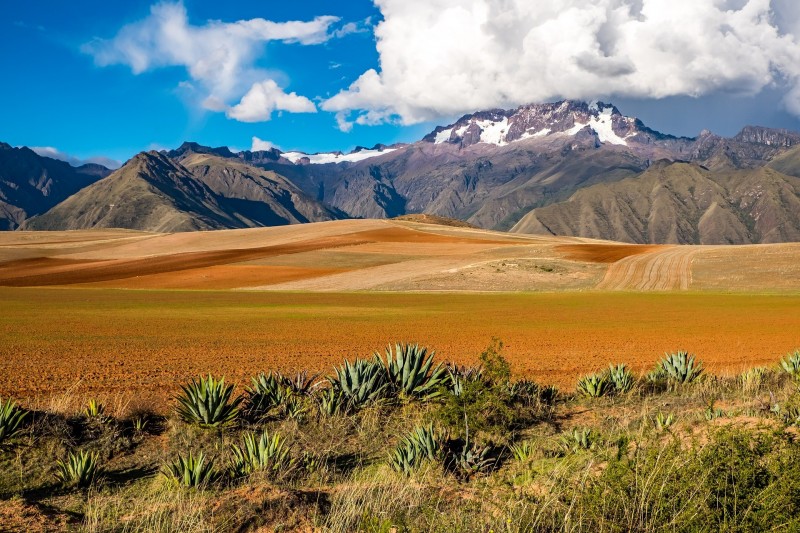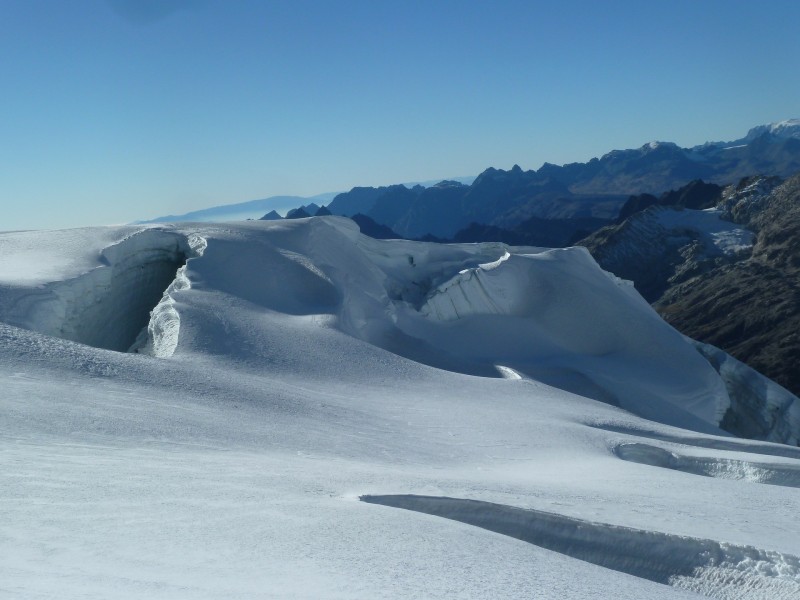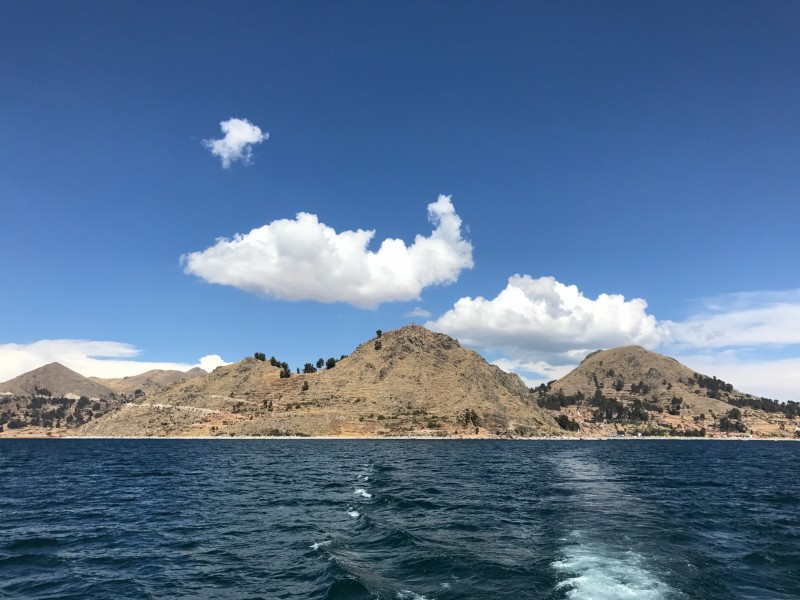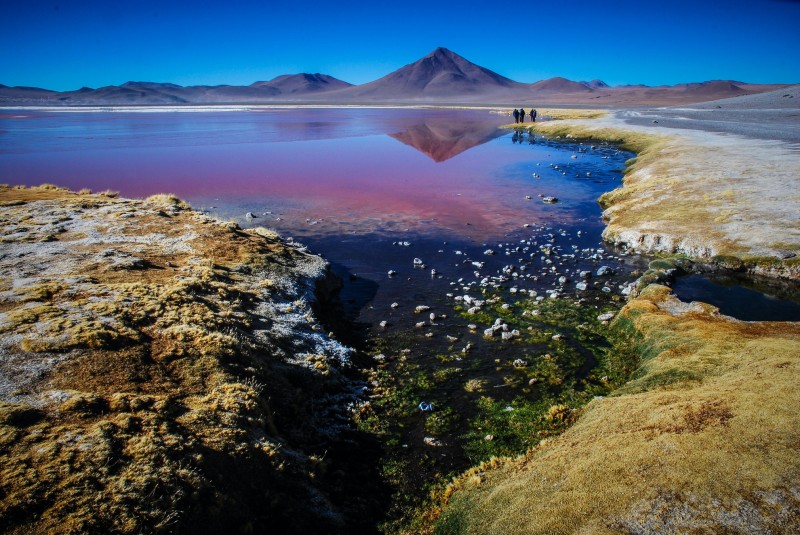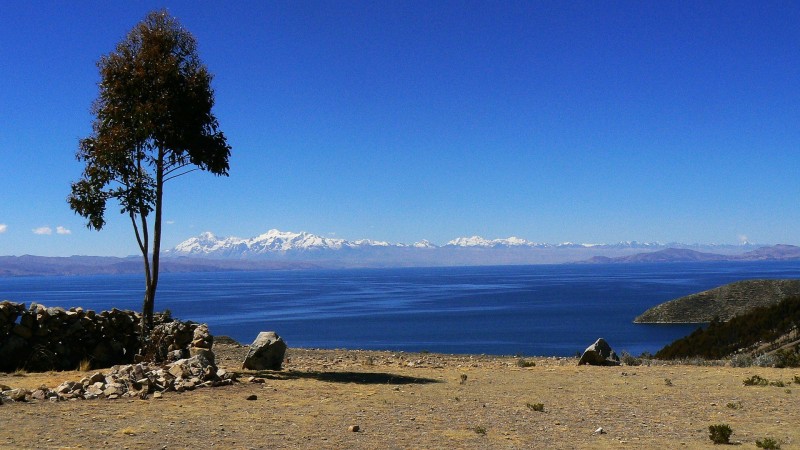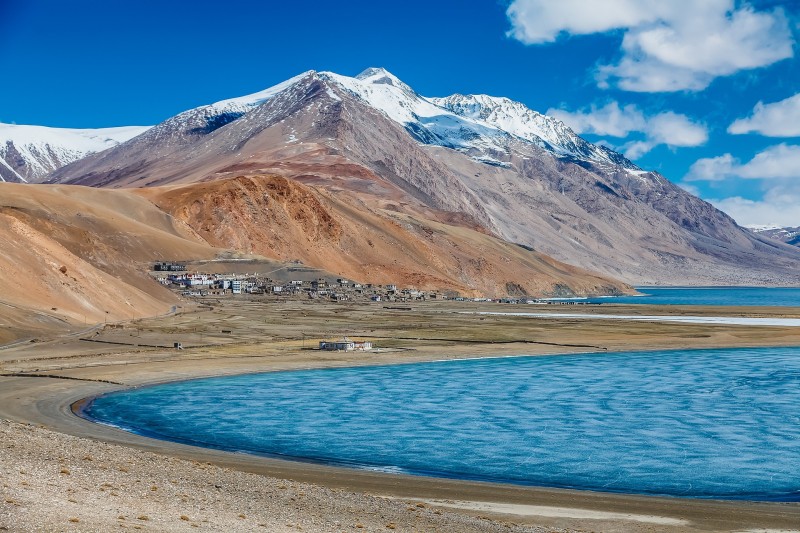Bolivia
Bolivia
Capital city description
Sucre
Sucre stands for peace and tranquility; Sucre is located in Bolivia’s Central Highlands and is much older than La Paz, first established in 1538. The climate is mild, and the people are relaxed and warm. It’s the most beautiful city in Bolivia and a UNESCO World Heritage-listed city center. Sucre is famous for its whitewash buildings (its alternative name la Ciudad Blanca), picturesque rooftops, and well-preserved colonial architecture. Sucre was named the provisional capital, and in 1839, it became the official capital.
La Paz
The city of La Paz, the capital city of Bolivia, officially known as Nuestra Senora de la Paz, and the capital of the Autonomous Peace Department, is the most important city of Altipampa and the closest to Peru. In 2014, it was considered one of the seven new wonders of the world by the New Seven Wonders Foundation, presided over by the Swiss Bernard Weber.
Climate
- November-March: Summer
- April-October: Winter
Bolivia is a highland county with one-third of its region lying on the Andes Mountains. It consists of humid jungles, balmy lakesides, semi-arid highlands, and temperate valleys, with the climate varying depending on the topography and altitude of each region. Despite the country having varying climatic conditions, it enjoys two distinct seasons: the dry season (winter) and the rainy season (summer). During the heavy rain season, the country may experience landslides in areas close to the mountains. It becomes freezing at night.
Languages spoken
The official language of the Republic of Bolivia is Spanish. About 40% of Bolivians speak Spanish as a mother tongue.
In the towns and communities near the border with Paraguay, languages of Guarani origin are spoken. However, some 39 other living languages are used in the country spoken by people in different regions. The Aymara (in the plane) and Quechua (in the mountain areas) are the most spoken among these languages. Approximately 37% of the people still speak Quechua, and 24% speak Aymara, although an increasing number of Amerindians also speak Spanish.
Fun/Fascinating Facts
1. Olivia’s capital, La Paz, is the world’s highest capital city. La Paz is located at an elevation of 3,630 meters.
2. In 1987 Bolivia made the world’s first debt-for-environment trade when the country swapped the 135,000-hectare Beni Biosphere Reserve with a U.S conservation organization, which in turn bought US$650,000 of the country’s national debt from a bank for US$100,000. Bolivia still conserves its environment, and in 1995 the Madidi National Park was created. The park includes just about everything, which ranges from Andean glaciers to rain forests. Maddi has also helped to develop the country’s ecotourism, which provides for watching about 1,000 species of bird and tracking tapirs.
3. Bolivia is one of the top “mega-diverse” countries in the world. The mega-diverse countries have more than 70% of all species known to man. Bolivia is 11th in the world’s country for plant species with over 20,000 plant species, 7th for bird species and 4th for butterfly species, and 10th for vertebrate species.
4. Dead animals, including dried llama foetuses, are sold on the streets of Bolivia to citizens so they can offer them up to Pachamama (Mother Nature) in return for blessings.
5. Salar de Uyuni is an enormous 10,582 square kilometers, making Bolivia home to the most extensive salt flats globally.
Unique Customs/Traditions
Bolivian culture is full of exciting and unusual traditions and customs. Bolivian customs come from various origins, including the ancient indigenous groups, the Catholic Spaniards, and traditional Andean culture.
Generally, Bolivians are family-oriented people and often very close-knit, with all generations living together under one roof. Marriage is an essential part of society, especially in rural communities, and is expected of everyone.
Some communities believe in co-habitation and starting a family before the marriage ceremony, whereas others follow the more Catholic tradition of marriage being the first step. At such events as marriages, baptisms, or funerals, offering a lot of food is very important.
Bolivian people are generally quite suspicious, so other ‘supernatural’ ideas exist too. On All Souls’ Day or Day of the Dead, it is even Bolivian tradition to offer food to the dead, as they are believed to return to their homes on this day. Some Andean customs originating from the Incas are still in practice as well.
Popular universities
| Name | Description | |
|---|---|---|
| Universidad Mayor de San Andrés | The Universidad Mayor de San Andrés, (also usually known by the acronym UMSA) is the primary public university of the Plurinational State of Bolivia, established in 1830 in the department of La Paz (seat of government) and deployed throughout it, in the capital city and its provinces in 4 Regional University Centers (CRUs) and various Local University Venues (SULs). The UMSA is the second oldest university in Bolivia, after the San Francisco Xavier de Chuquisaca University (1624) and the most representative of the Bolivian University System. It is one of the most prestigious higher academic centers in the country, the cradle of different ideologies and participants in many social movements during the different periods of government in the history of Bolivia; at the same time, teaching and the factum of national education. | |
| Universidad Católica Boliviana | Universidad Católica Boliviana (Bolivian Catholic University) is a private higher education institution located in the urban setting of the large city of La Paz. Established in 1966, UCB is one of the best universities in the country, promotes the progress of Bolivian society by training the human talent of professionals in different branches of knowledge to solve emerging problems in the social context and provide solutions from an academic perspective. The graduates of the Bolivian Catholic University "San Pablo" have been and are the main actors and leaders of leadership both in public institutions and the most recognized private organizations, with which they have earned the prestige and recognition of Bolivian society. | |
| Universidad Mayor de San Simón | Universidad Mayor de San Simón (Higher University of San Simón) is a non-profit public higher education institution located in the metropolis of Cochabamba. Established in 1832 and officially recognized by the Ministerio de Educación, Bolivia (Ministry of Education of Bolivia. Universidad Mayor de San Simón (UMSS) offers courses and programs leading to officially recognized higher education degrees such as bachelor's degrees in several areas of study. UMSS also provides academic and non-academic facilities and services to students, including a library, sports facilities, study abroad and exchange programs, and administrative services. | |
| Universidad San Francisco Xavier | Universidad San Francisco Xavier (University of Saint Francis Xavier) is a non-profit public higher education institution located in the medium city of Sucre Chuquisaca. It was officially recognized by the Ministerio de Educación, Bolivia (Ministry of Education of Bolivia). Established in 1624, Universidad San Francisco Xavier (USFX) offers courses and programs leading to officially recognized higher education degrees such as bachelor's degrees in several areas of study. USFX also provides several academic and non-academic facilities and services to students, including a library, study abroad and exchange programs, and administrative services. | |
| Universidad Autónoma Gabriel René Moreno | Universidad Autónoma Gabriel René Moreno (Gabriel René Moreno Autonomous University) was established in 1879.A non-profit public higher education institution located in Santa Cruz de la Sierra Santa Cruz and officially recognized by the Ministerio de Educación, Bolivia (Ministry of Education of Bolivia). Universidad Autónoma Gabriel René Moreno (UAGRM) offers courses and programs leading to officially recognized higher education degrees such as bachelor's degrees in several areas of study. UAGRM also provides academic and non-academic facilities and services to students, including a library and administrative services. | |
| Universidad Autónoma Juan Misael Saracho | Founded in 1946, Universidad Autónoma Juan Misael Saracho (Juan Misael Saracho Autonomous University) is a non-profit public higher education institution located in the small city of Tarija. Universidad Autónoma Juan Misael Saracho (UAJMS) offers courses and programs such as bachelor's degrees in several areas of study. And it is officially recognized by the Ministerio de Educación, Bolivia (Ministry of Education of Bolivia). UAJMS also provides academic and non-academic facilities and services to students, including a library, sports facilities, study abroad and exchange programs, and administrative services. | |
| Universidad Privada Boliviana | Established in 1993, Universidad Privada Boliviana (Bolivian Private University, Cochabamba) is a non-profit private higher education institution located in the suburban setting of the metropolis of Cochabamba. This institution also has branch campuses in the following locations: La Paz, Santa Cruz de la Sierra, Sucre, Tarija, Oruro. It was officially recognized by the Ministerio de Educación, Bolivia (Ministry of Education of Bolivia). Universidad Privada Boliviana (UPB) offers courses and programs leading to officially recognized higher education degrees such as pre-bachelor degrees (i.e., certificates, diplomas, associate or foundation), bachelor degrees, master degrees, doctorate degrees in several areas of study. UPB also provides several academic and non-academic facilities and services to students, including a library, sports facilities, financial aids and scholarships, study abroad and exchange programs, and administrative services. | |
| Universidad Privada de Santa Cruz de la Sierra | Founded in 1984, Universidad Privada de Santa Cruz de la Sierra (the Private University of Santa Cruz de la Sierra) is a non-profit private higher education institution located in the metropolis of Santa Cruz de la Sierra, Santa Cruz. Officially recognized by the Ministerio de Educación, Bolivia (Ministry of Education of Bolivia), Universidad Privada de Santa Cruz de la Sierra (UPSA) is a coeducational Bolivian higher education institution. Universidad Privada de Santa Cruz de la Sierra (UPSA) offers courses and programs leading to officially recognized higher education degrees such as bachelor's degrees in several areas of study. UPSA also provides several academic and non-academic facilities and services to students, including a library, study abroad and exchange programs, as well as administrative services | |
| Universidad Nur | Universidad Nur (Nur University) is a private higher education institution located in Santa Cruz de la Sierra, Santa Cruz. This institution also has branch campuses in the following locations: La Paz, Cochabamba. It was founded in 1984 and officially recognized by the Ministerio de Educación, Bolivia (Ministry of Education of Bolivia); Universidad Nur offers courses and programs leading to officially recognized higher education degrees such as bachelor's degrees in several areas of study. Universidad Nur also provides academic and non-academic facilities and services to students, including a library and administrative services. | |
| Universidad Privada Domingo Savio | Universidad Privada Domingo Savio (Domingo Savio Private University) is a private higher education institution located in Santa Cruz de la Sierra, Santa Cruz. This institution also has branch campuses in the following locations: Tarija, Potosí. Founded in 2000 and officially recognized by the Ministerio de Educación, Bolivia (Ministry of Education of Bolivia). Universidad Privada Domingo Savio (UPDS) offers courses and programs leading to officially recognized higher education degrees such as bachelor's degrees in several areas of study. UPDS also provides several academic and non-academic facilities and services to students, including a library, study abroad and exchange programs, and administrative services. | |
Festivals & Events
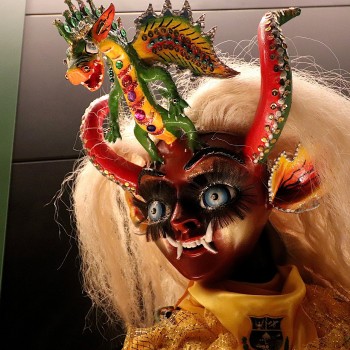
Carnaval de Oruro
Date: 6th of February to 26th of February
Oruro is celebrated the week before Ash Wednesday, and in just a few days, the town sees more than 400,000 visitors. People come from all over to witness the marching bands, the traditional folk dances, and parades so elaborate they last for dozens of hours.
The Carnaval de Oruro is one of UNESCO’s Masterpieces of the Oral and Intangible Heritage of Humanity. Bursting with colorful traditions, exciting attractions, and places to visit, including plazas, museums, and cathedrals,

Fiesta de la Cruz
Date: May 3
The traditional festival of the Cross, which is celebrated every May 3, summons the inhabitants of Tacagua, Buenos Aires avenue, and Alto San Pedro of La Paz.
The best parties are held on the island of Suriqui (Lake Titicaca) and in Tarija, Vallegrande (Santa Cruz), Copacabana (La Paz), and Cochabamba.
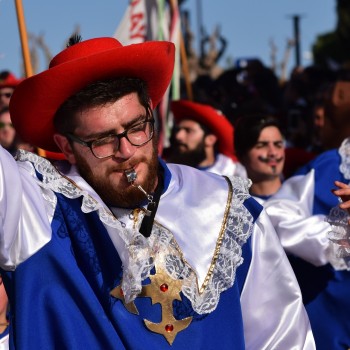
Fiesta del Gran Poder
Date: Last week of May
The annual Fiesta del Gran Poder festival in La Paz is the most popular religious festival in Bolivia. It pays homage to an icon of Jesus known as Nuestro Señor del Gran Poder (Our Lord of Great Power).
La Fiesta del Gran Poder was created by the indigenous Aymara people of the Andes and celebrates the country's rich cultural heritage as a Catholic festival. The dances tell folkloric tales and represent different communities from all over Bolivia and the Andes, and the festival is a bringing together of these communities.
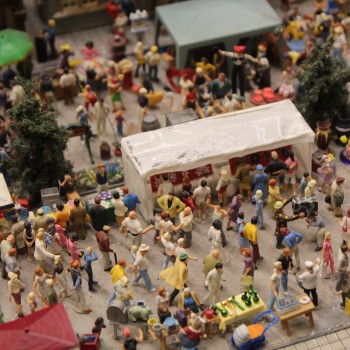
Alasitas
Date: January
Alasitas is an Aymara festival Bolivia celebrates in reverence of the indigenous "god of bounty" or "abundance" called the Ekkekko. Alasitas is a month-long event to honor Ekeko, the Aymara god of abundance, beginning on the 24th of January and in Santa Cruz, takes place in September. Everything is in miniature! This festival originally took place in September throughout the country when it was springtime in Bolivia, and farmers prayed for a good crop so their harvest would be bountiful. It takes place at the Parque Urbano in La Paz and the 5th Ring between Tres Pasos al Frente and Cumavi in Santa Cruz.
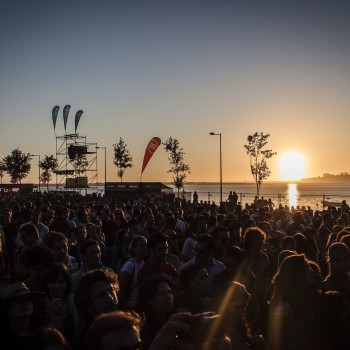
Winter Solstice - Willkakuti - Aymara New Year
Date: June 21st
The Aymara, the predominant indigenous race in La Paz, have long believed that the winter solstice marks the beginning of a new year.
The winter solstice or Willkakuti is celebrated in Tiwanaku every June 21st. This date marks the Aymara New Year or Machaj Mara. The winter solstice indicates that the earth is at its farthest point from the sun.
A raging party overtakes the normally quiet nearby town of the same name, with live folkloric music, bonfires, and plenty of merrymaking throughout the night. Just as the sun comes up, everyone heads into the Tiwanaku ruins to greet the first rays of sunlight of the year with outstretched arms.
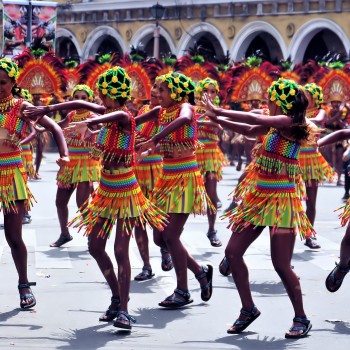
Festival of Virgen de la Candelaria
Date: First week of February
The Virgen de la Candelaria Festival celebrates at the beginning of February each year; this raucous festival pays homage to Bolivia’s most sacred Catholic statues, the Virgen de la Candelaria (Our Lady of Copacabana). The celebration consists of a festive mass, colorful dancing, and the Road to Cavalry, which bestows the mercy of the virgin. This small and visually underwhelming statue is so revered, it had an entire church built to house it – a worthwhile investment considering it is believed to have saved the lives of doomed fishers and destroyed the crops of non-believers.
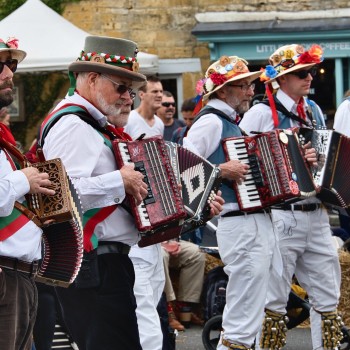
Baroque Music Festival
Date: April
The Baroque Music Festival, which takes place every two years on even-numbered years, is one of the most sought-after tours in Bolivia. This Festival is one of the most extensive in Bolivia. It takes place in over 20 Jesuit Mission towns (simultaneously!) located throughout the Amazon jungle regions of Chiquitos, Guarayos, and Moxos, Bolivia.
Baroque Music Festival is bi-annual and features over 800 musicians from Europe and Latin America in 100 concerts.
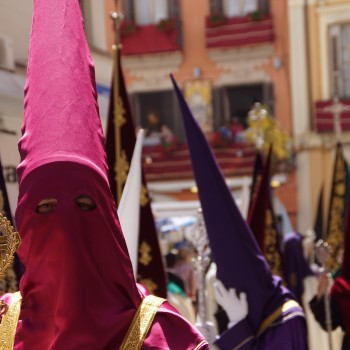
Semana Santa
Date: Last week of March
Semana Santa (Holy Week) is a week of holy festivities in March. Good Friday (March 30) of Semana Santa is a national holiday - expect shops to be closed.
Semana Santa is celebrated throughout the whole continent in the catholic religion and Bolivia with processions similar to the rest of the Andes region. Travelers will find lively celebrations featuring food, music, dances, parades, and religious ceremonies.
Attractions / Top Sights
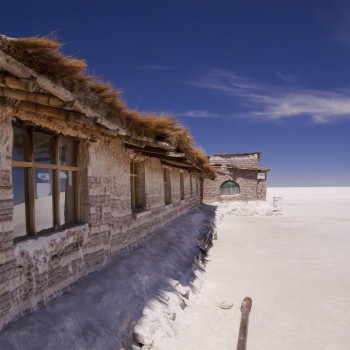
Salar de Uyuni
When to visit: Late April is the best time to visit Uyuni.
One of the flattest places globally, the 4,000-square-mile salt flats were formed by a prehistoric lake. Visitors travel in 4×4 vehicles across the expanse of the salt flats to visit locally fashioned structures made entirely from bricks of salt.
The salt flats are at their most spectacular after a rain, when water sitting atop the cemented salt acts as a mirror, perfectly reflecting the sky above.
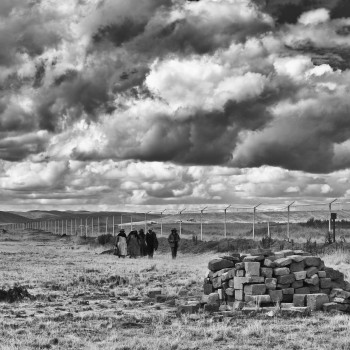
Tiwanaku
When to visit: The best time to visit Tiwanaku is in the months of April-May-June August.
Tiwanaku is one of the most important precursors to the Inca Empire, located near the south-eastern shore of Lake Titicaca in Bolivia. The community grew to urban proportions between the 7th and 9th centuries, becoming a significant regional power in the southern Andes.
At its peak, the city had between 15,000–30,000 inhabitants. While only a small part has been excavated, Tiahuanaco represents the greatest megalithic architectural achievement of pre-Inca South America.
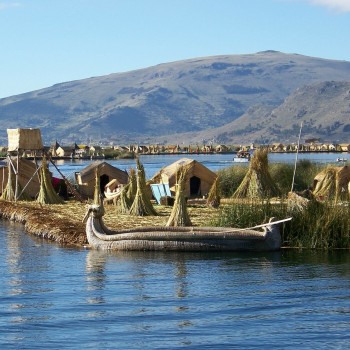
Lake Titicaca
When to visit: The best time to visit is between February and November.
Lake Titicaca is the largest lake in South America. Incans and several other native peoples are thought to have originated in the region. Near the south-eastern shore of the lake lies Tiwanaku, ruins of an ancient city-state that scholars believe was a precursor of the Inca Empire.
Lake Titicaca is a popular vacation destination. The original Copacabana is a favorite resort for both tourists and locals.
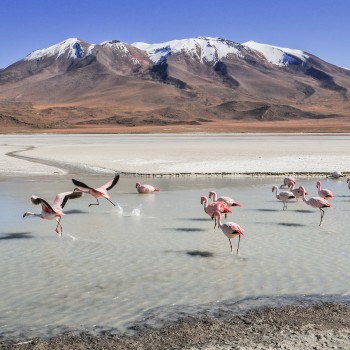
Eduardo Avaroa Andean Fauna National Reserve
The Eduardo Avaroa National Reserve of Andean Fauna is a landscape of breathtaking beauty. It is located in SW Bolivia and part of the Altiplanico area - high altitude and dry. You will enter a world with some of the most unusual landscapes filled with rare and endangered species, including large colonies of vizcachas and flamingos, as you explore the Eduardo Avaroa Andean Fauna National Reserve.
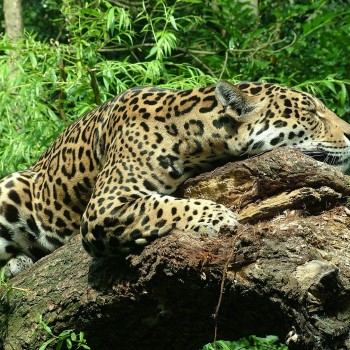
Madidi National Park
Madidi National Park is located in the northeastern part of Bolivia along the upper Amazon river basin. Encompassing over 7,000 square miles, Madidi is known as one the most biologically diverse parks globally.
This national park is home to more than 1,200 birds and countless other mammals, reptiles, insects, and more than 20,000 types of plants. Visitors to Madidi may spot an elusive jaguar, a giant otter, or the titi monkey, a species of monkey found nowhere else in the world.
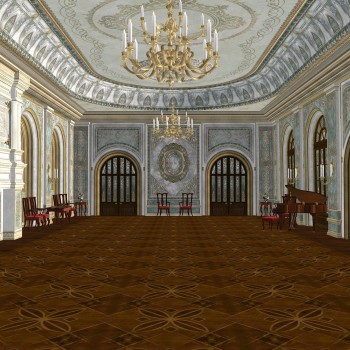
La Glorieta Castle
El Castillo de La Glorieta is located 5.5km from the center of Sucre, on the road to Yotala and Potosi. La Glorieta Castle is the place to go for a fairytale experience; this pink castle offers an opportunity to relax, explore, and see the home to the country’s only prince and princess from the late 1800s.
The castle is situated beside a military academy (Liceo Militar). You must pass through the academy’s checkpoint on the way to the castle (which lies 100m or so past the checkpoint.
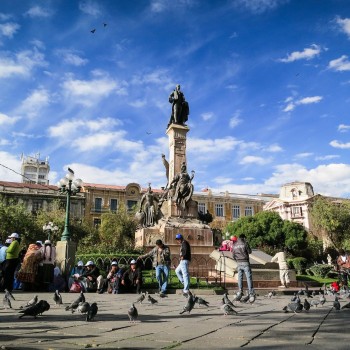
Plaza Murillo
When to visit: The best time to visit Plaza Murillo is from October to December
Located in the heart of La Paz, where the government palace is located, is the Plaza Murillo. In 1900, the plaza was officially named Plaza Murillo after General Murillo, one of the heroes of the Bolivian independence movement. The plaza is filled with many monuments and is surrounded by historical buildings, including the Metropolitan Cathedral.
During colonial times, Plaza Murillo was on the Spanish side of the Prado, and it became the center of the action because it was the primary water source in town.

Isla Del Sol (Sun Island)
When to visit: The best time to visit Isla del Sol is from February through November
Known as the birthplace of the sun and the Inca bloodline, Bolivia’s Isla del Sol – meaning “Island of the Sun” in Spanish – is deemed one of the most sacred islands in South America.
The Isla Del Sol (Sun Island) is located on Lake Titicaca and is one of the best places to take a boat trip to explore more than 80 ancient Inca ruins. While exploring the ruins scattered throughout the island, you will encounter Aymara villagers busy farming terraces and tending to the sacred sites.

Sol de la Mañana
When to visit: In the morning
Sol de la Mañana, Spanish for Morning Sun, is a geothermal field lined with geysers and bubbling mud pots. It is located in Sur Lípez Province in the Potosi Department of south-western Bolivia. It extends over 10 km2, between 4800m and 5000m in altitude.
The landscape of Sol de la Mañana contrasts with the neighboring salt flats offering an impressive experience, especially when the geysers erupt, reaching heights up to 15 meters.

